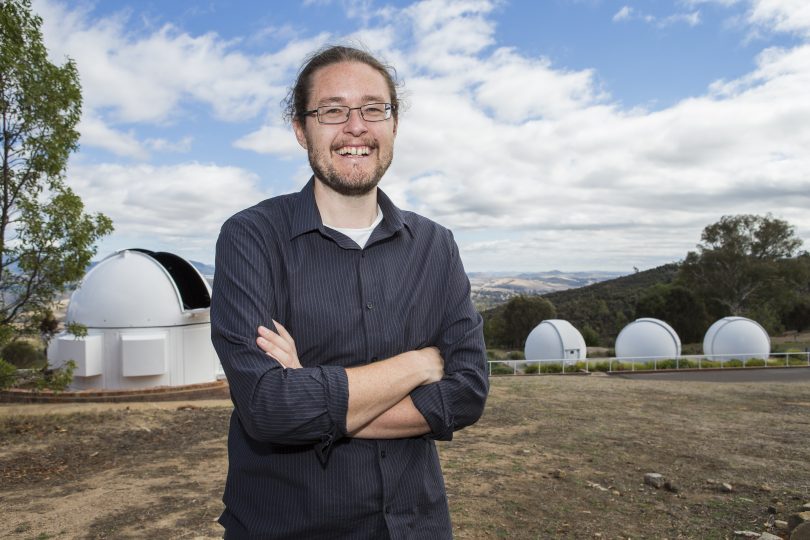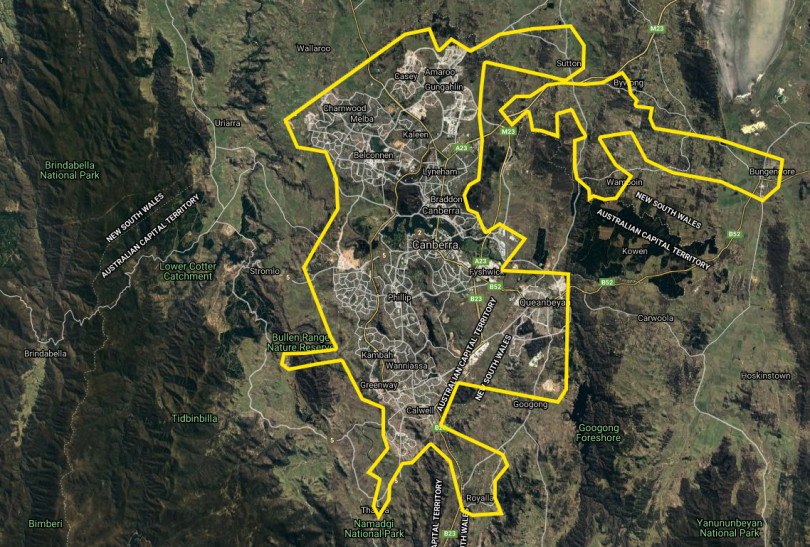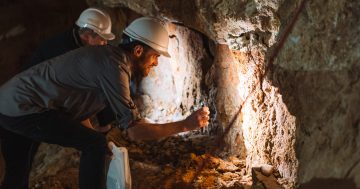
ANU astronomer Dr Brad Tucker is behind the satellite selfie project as part of the Where You Are Festival. Photo: File.
The sky’s no limit for a new project that will give Canberra and the surrounding regions the chance to pose for the ultimate selfie, taken by a satellite in space.
As part of RISE Canberra’s Where You Are Festival, the satellite, from company Maxar, will fly over Canberra, Queanbeyan, Royalla, Googong, Tharwa, Yass, Murrumbateman, Sutton and Bungendore between 17 and 22 August from 10:00 am to 2:00 pm each day.
The satellite selfie is also part of the ACT’s National Science Week that will be promoted on their Facebook, Twitter and Instagram pages (#satelliteselfie, #whereyouarefestival and #risecanberra).

The path of the passing satellite during National Science Week. Image: Supplied.
“If you’re a selfie fan, this is your time to shine. At certain times throughout that week, you can go outside and form a human sign or a message to be seen from space,” according to Dr Brad Tucker, an astronomer at the ANU.
“The satellite won’t be able to see the detail of your face, but it will be able to see things about 40 to 50 cm wide, so about the size of an A3 sheet of paper.
“So you can go outside and form a message with paper or alfoil, or get some friends together at an oval at a socially acceptable distance and form a huge message that will be seen from space. Then we’ll take all of those images to create the world’s biggest satellite selfie.”
For Dr Tucker, it’s another way for non-scientists to think about the importance of science in our daily lives, including satellites.
“Some look deep into space to study distant stars and galaxies, but many look down at Earth to monitor the climate, oceans or help with communications. Generally, satellites are pretty sneaky though, and they rarely give us the opportunity to say cheese before snapping a picture.
“That got us thinking: what if we knew when the satellite was zooming overhead? Better yet, what if we told 400,000 of our closest friends too?”
To be part of the moment, you need to either be outside during the flyovers or leave your sign outside to be photographed. The best places are somewhere out in the open and not blocked by trees or buildings.
Participants are also encouraged to create a sign, and bigger is definitely better.
Read this handy guide for more specific tips on materials to use, but whatever it is, make sure it’s weatherproof and contrasts with the background, such as a dark sign on a light background. Send a photo of your creation to [email protected] and the best designs will be shared in an album from across Canberra.
School students can also get in on the project by using this year’s theme for National Science Week, the ‘Deep Blue: innovations for the future of our oceans’. Students are also being encouraged to make their favourite sea creature (or even a Skywhale).
Schools can register here and receive their free satellite communication kit (max one per school).
More information is available on the RISE Canberra website.
Original Article published by Michael Weaver on The RiotACT.



